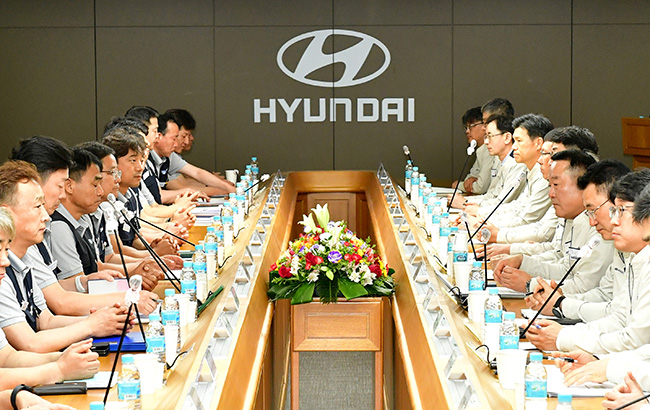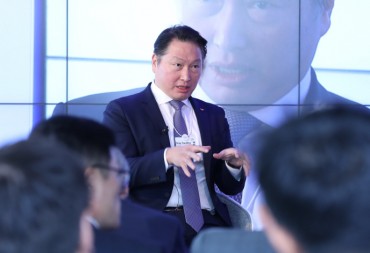
Hyundai’s labor and management have successfully reached a wage and collective bargaining agreement for the fifth year in a row without any labor disputes. (Image courtesy of Yonhap News)
SEOUL, Sept. 20 (Korea Bizwire) – Hyundai Motor Company and its labor union have decided to hire more younger workers for a new electric vehicle factory in Ulsan. Employees in their 20s and 30s will make up 30 percent of the workforce.
The new Ulsan EV plant, set to be completed in 2025, will have 30 percent of employees aged 39 or younger, 40 percent aged 40 to 49, and 30 percent aged 50 or older. Older employees who are less than two years away from retirement won’t work at the new EV plant.
The decision was made to ensure younger workers can learn skills at the EV plant for the future, according to the company. As of last year, Hyundai had 32,101 employees aged 50 and over, making up 43 percent of the total workforce of 73,431.
Meanwhile, Hyundai’s labor and management have successfully reached a wage and collective bargaining agreement for the fifth year in a row without any labor disputes. This is significant as Hyundai, the largest carmaker in the domestic automotive industry, has avoided strikes, easing concerns about export disruptions due to labor disputes in the manufacturing industry this fall.

With this labor agreement in place, it’s expected that “political strikes” often carried out during election seasons will lose their influence, and a more reasonable labor-management culture will be established in private companies. (Image courtesy of Yonhap News)
Observers believe that the agreement was influenced by the mood of younger union members, who prioritize practicality over rhetoric. In exchange for extending the retirement age to 65, the union secured a record base salary increase.
With this labor agreement in place, it’s expected that “political strikes” often carried out during election seasons will lose their influence, and a more reasonable labor-management culture will be established in private companies.
On September 19, Hyundai Motor’s labor union approved the tentative labor agreement with a 58.8 percent approval rate. Initially, the union had announced a partial strike for September 13 and 14, but the crisis was averted on September 12 when a tentative agreement was reached.
It’s noteworthy that Hyundai Motor’s union, the largest in the automobile industry, concluded labor negotiations without a strike. Currently, automakers are leading the Korean export industry, with Hyundai at the forefront. According to the Korea Association of Automobile Manufacturers, exports of finished vehicles increased by 39.6 percent to $46.75 billion in the first eight months of this year compared to the same period last year.
Some critics argue that Hyundai’s union has lost momentum and has been labeled as an “aristocratic union.” The white-collar unions, representing the MZ generation, differ from the production unions that used to lead strikes, and the decline in membership is also a concern for Hyundai’s unions. According to Hyundai’s sustainability report, the number of union members decreased from 48,933 in 2020 to 45,751 last year, and the unionization rate dropped from 68.2 percent to 63.1 percent during the same period.
Kevin Lee (kevinlee@koreabizwire.com)






